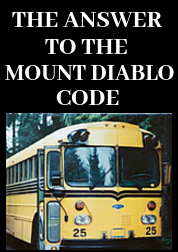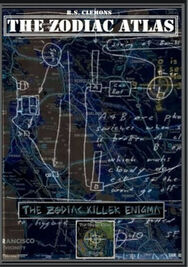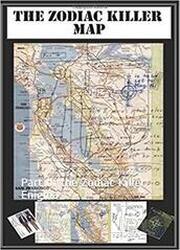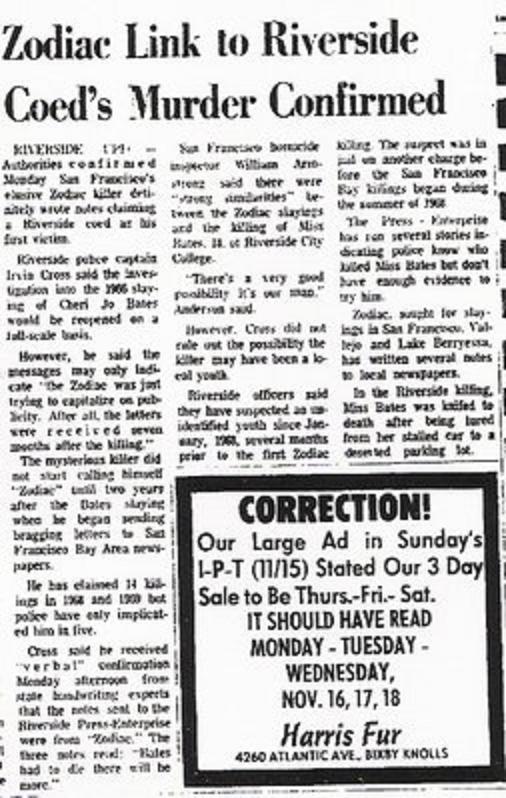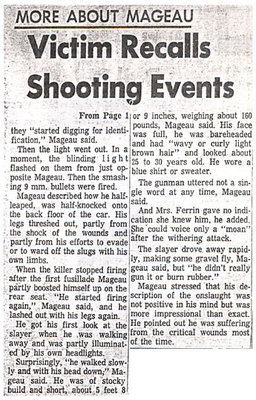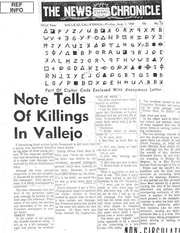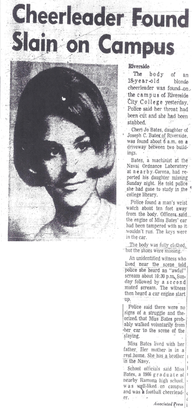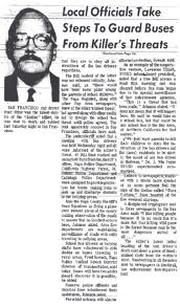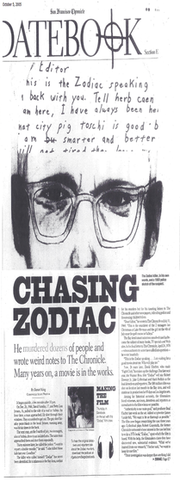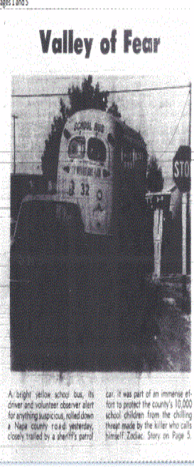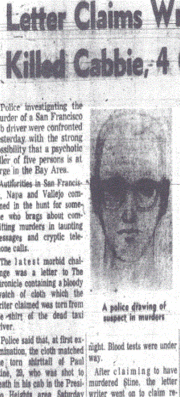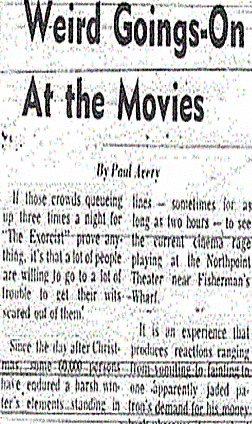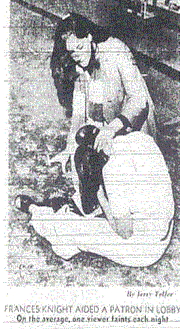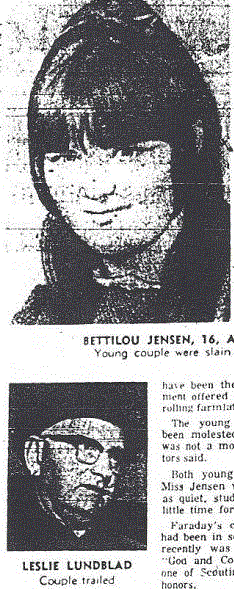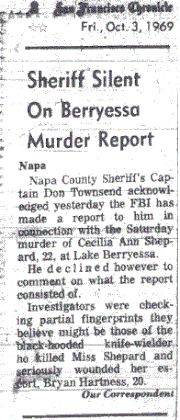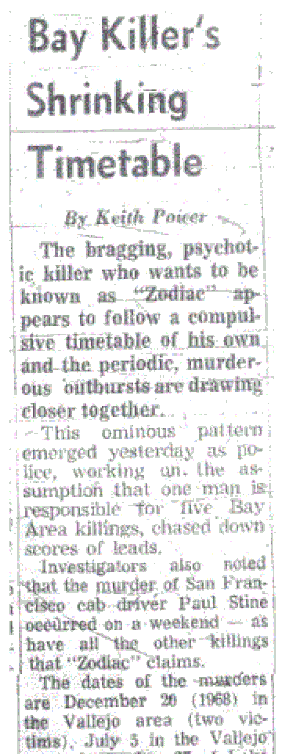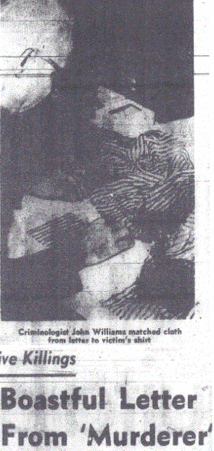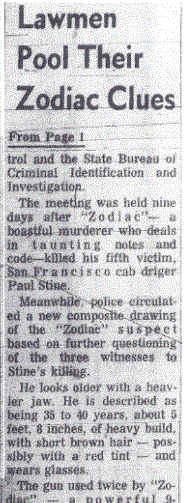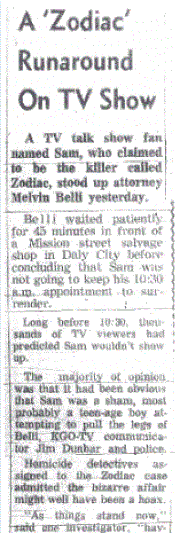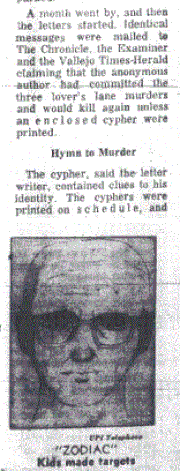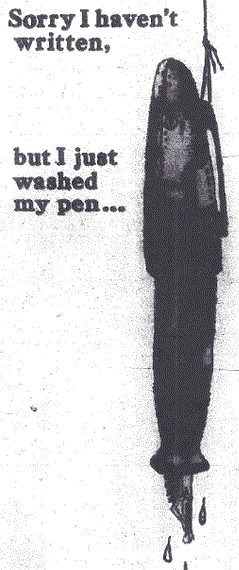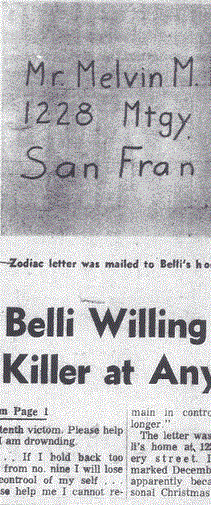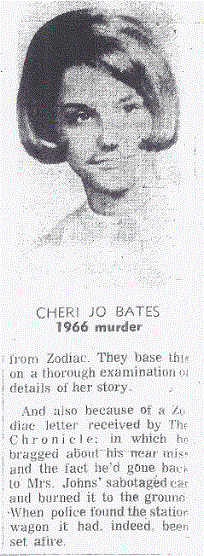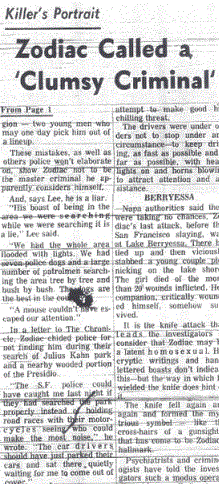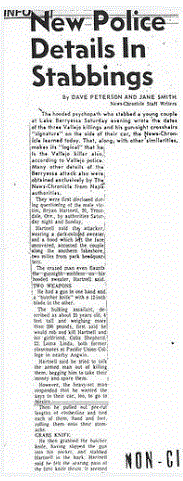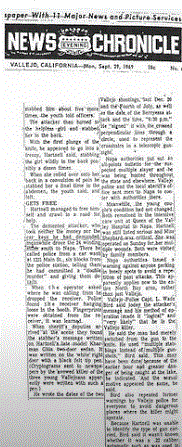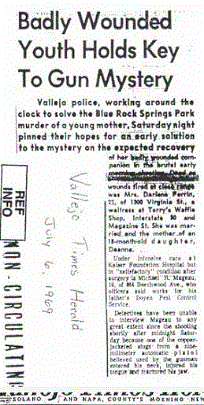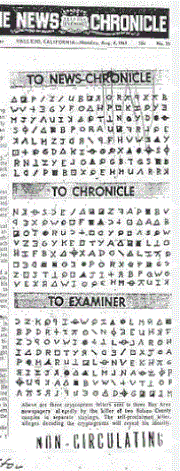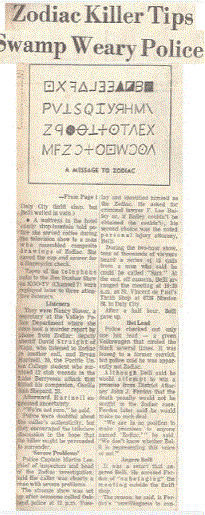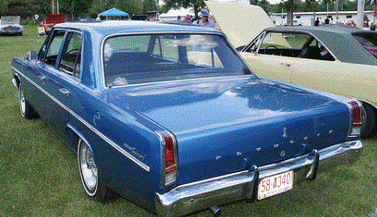 1967 Plymouth Valiant https://www.flickr.com/photos/greggjerdingen/
1967 Plymouth Valiant https://www.flickr.com/photos/greggjerdingen/
The recollection of William Crow often appears an overlooked feature of this case - and if true - the activity he described within 75-90 minutes of the actual double murder at the identical location should not be underestimated. Whether William Crow saw one or two Caucasians is open to scrutiny - and although he claimed the Sheriff 'suggested' the Valiant to him, his later recollection of the number of occupants was less than clear, stating "After some moments, the other car turned around in the roadway and went back down the road from which we had come. I kept making macho statements, but not totally without some sense about me, I drove home. I did not see the car again. I could not see the passenger seat, but the driver was a man with short hair and glasses. I did not see his specific facial features". Reading between the lines, if he couldn't see the passenger seat, there could have been two occupants. This may be significant when considering the sighting of Stan, and more importantly, the report issued by the Department of Justice, Bureau of Criminal Identification and Investigation, conducted by David Burd regarding the murder of David Faraday and Betty Lou Jensen.
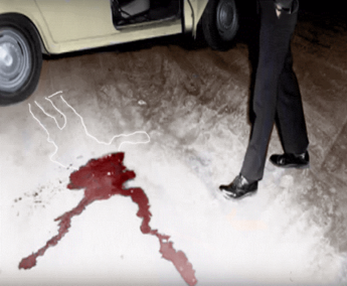
The logical approach would be to examine the bullets recovered from Betty Lou Jensen at autopsy, along with the single bullet recovered from David Faraday, hoping they haven't been completely disfigured on impact, and thereby make a comparison. The same is true for the casings. Here are some excerpts from the Department of Justice report.
'The following exhibits were submitted [1] Bullet from Faraday's body. [2] Two bullets from Jensen's body. [3] Bullet found in panties of Jensen. [4] Five Super X .22 cartridge cases found at scene by coroner. [5] Four Super X cartridge cases found at scene by Sgt Silva. [6] One bullet found on top of 1961 Rambler. [7] One bullet found in floor mat, left side storage area of 1961 Rambler. [8] One bullet found on ground near Jensen's body. [9] Purple dress of Jensen.'
What is important, is how you interpret these findings.The report continued 'Intercomparison of the cartridge cases in items [4] and [5] indicate that all were probably fired from the same weapon and all are the same make and type of ammunition. Due to the lack of sufficient unique structure it appears that considerable difficulty will be encountered in positively identifying the responsible weapon if it should be recovered.'
This seems to indicate that nine of the casings found at the crime scene were likely fired from one weapon. However, there were ten casings recovered. Did the final casing match the other nine, and why is this not mentioned in [1] through [9]? The following statement in the Department of Justice report is crucial: 'All bullets submitted were Western copper coated .22 long rifle bullets, Although some were damaged, it was possible to determine ALL had 6 right hand groove class characteristics. apart from item' [1]'
Item [1] was the bullet recovered from David Faraday and it didn't exhibit these characteristics. Is this the proof that more than one person was involved in the Lake Herman Road murders? It would seem highly unlikely that the Zodiac Killer fired 9 shots with one weapon, then switched to a similar model, but separate gun, to murder David Faraday. Was the murderer of David Faraday, the assailant given the responsibility of subduing him - possibly restraining him from behind by a left-handed shooter, while a second subject initiated the attack and murdered Betty Lou Jensen? Does this ballistics evidence suggest there were two shooters at Lake Herman Road on December 20th 1968, especially considering the suspicious activities experienced by William Crow only 75 minutes earlier, possibly involving two Caucasian males? The pervading notion is that the killer or killers were opportunistic by nature, cruising up and down Lake Herman Road looking for potential victims. Or, were the murders planned in advance by two or more assailants? The answer, in part, may lie with 'Item [1]'.




 RSS Feed
RSS Feed

